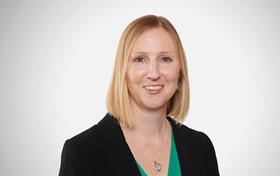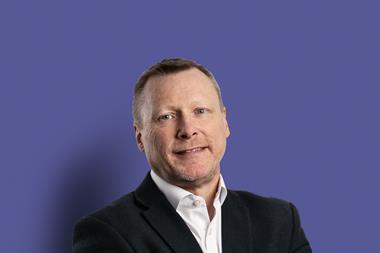Insurance Times asks experts about the progress of Blueprint Two and whether the digital transformation programme will be effective
Paul Andrews, chief executive, PoloWorks and Polo Managing Agency

From my perspective, the continual slippage in Blueprint Two project’s ability to deliver – according to the market-wide communicated project timeline – is slightly concerning.
This has led to a natural apathy among many managing agents regarding when and what this project will deliver and what the final benefits for market participants will ultimately be.
From the conversations I am having, not all c-suites are actively engaged and do not necessarily understand what their operations and finance functions should be doing to ensure they are not impacted by some of the very fundamental changes that will occur to the existing messaging process, which we all take for granted.
These messages underpin our ability to trade and ensure that we can not only recognise and deal with premiums, but also pay claims in a timely and appropriate manner.
Finally, as we again move closer to the revised ’jumping off’ point, market chatter is now focusing on concerns about the project’s capability to support a detailed and intensive testing programme.
There is some consternation in this area as the test pool seems very low.
This is particularly important because, over time, the market has developed a complex, multilayered ecosystem made up of not just multiple systems, but multiple versions of multiple systems.

Chris Newman, president international, Acord
Digitalising the world’s oldest and largest insurance platform, comprising of an ecosystem of over 400 stakeholders and decades of bespoke legacy systems that process billions in premiums and claims annually, is a mammoth undertaking.
One could argue that staging the 2012 London Olympics was an easier task – and we know what challenges that entailed.
The Blueprint Two programme is highly ambitious and necessary if London is to remain the global marketplace of choice for complex specialty risks.
The distinguishing achievement of Blueprint Two has been establishing and sustaining unprecedented collaboration within the London market community, with vendors, brokers and carriers across the market all working toward the same goal.
The London Market Group’s Data Council has united associations and practitioners with the understanding that digitalisation must rest on a foundation of accessible global data standards.
Lloyd’s and Velonetic – which represents the joint ventures between DXC Technology, the International Underwriting Association (IUA) and Lloyd’s of London – have maintained a channel of market education, Q&A sessions and drop in sessions to engage with all stakeholders.
It is absolutely critical for the London market to get this right. Lloyd’s and Velonetic understand this and have been adamant that nothing will be launched before we have full confidence. Prudent, ongoing adjustments to the process and schedule will be necessary to ensure success.
Everything we’ve seen so far indicates that Blueprint Two is well on its way to achieving our collective goal of transforming the market and realising its digital future.
Sunnie Luthra, managing director, Leadenhall Analytics

Blueprint Two has made significant strides in unifying the market behind a mammoth transformation programme, which – once successfully executed – will sustain Lloyd’s of London’s place as the world’s leading specialty insurance hub.
In the excitement and anticipation of the Blueprint’s stage one implementation, delays will inevitably grab the headlines – but that does not tell the whole story or necessarily determine its ultimate success.
Continued buy in from the market’s people – those who use the systems and technology every single day – is important. The risk of ‘transformation fatigue’ developing among this group could seriously threaten progress.
Repeated attempts to roll out flawed or poorly designed propositions certainly would not help either, which is why I believe that Lloyd’s chief executive John Neal was right to insist that the technology had to work before the roll out of stage one can happen.
We also must not overlook the successes of Blueprint Two, which so far include the Core Data Record and the syndicate in a box approach.
Unlike previous transformation projects, which addressed only certain sections of the overall workflow, Blueprint Two takes a holistic approach to modernising the entire insurance lifecycle, building on Blueprint One.
By continuing to listen to and engage with market participants, I believe that Blueprint Two can stay on track to deliver the ambitious modernisation agenda it has set out to achieve.

Amit Tiwari
Amit Tiwari, president for Emea and Apac, Xceedance
Blueprint Two aims to modernise the insurance market – essential work, but fraught with significant challenges during implementation.
Progress has been slower than anticipated, marked by considerable delays and ongoing uncertainty.
Despite some notable achievements, delivery has proven difficult.
Looking ahead, the adoption of application programming interface (API) driven architecture is expected to streamline data exchanges and enhance overall market connectivity – although this potential has not yet been fully realised.
As per the current cut over plan issued at the end of May 2024, phase one of Blueprint Two is scheduled to go live between 9 and 18 October 2024, followed by phase two in April 2025.
The phased approach aims to minimise disruption, but it has not entirely mitigated the impact of delays and uncertainty.
Insurers heavily rely on service providers such as Xceedance to implement necessary tech tools.
Projects as large, complex and ambitious as Blueprint Two often experience delays. Continuous stakeholder engagement is critical to maintaining momentum. Regular working sessions, virtual drop ins, Q&A sessions and the publication of updated onboarding guides and checklists have been pivotal in continuing this momentum.
In conclusion, while the long-term goals of Blueprint Two are commendable, its implementation has been challenging. Once fully operational, Blueprint Two will support the evolving needs of the insurance market – but considerable effort lies ahead.
Proactive measures are imperative to ensure its success.
Louise Day, chief operating officer, International Underwriting Association

The transition to a digital marketplace in the world’s largest insurance hub is a vast and complex undertaking.
There are huge potential benefits to this work, with placements, claims and settlements set to operate faster and more cheaply. It is essential that these processes run as smoothly as possible.
A dedicated company market support programme was launched in June 2024 to help International Underwriting Association (IUA) members adopt the new services being developed under Blueprint Two.
This has provided enhanced assistance for adoption and testing.
We have also now established a new group to monitor progress.
Our Cut Over Review Committee will review information about the readiness of the London company market and its technology partner, Velonetic, around making the switch to a new single platform for processing premiums and claims.
This committee – which is comprised of senior practitioners with expertise in information technology and security, digital transformation and business processing – will advise the IUA board so that it can be assured there is no reason to recommend not cutting over to the new services.
It will meet at least monthly until the switch to new digital processing services has been achieved.

Matt Carter, practice director for insurance, Altus Consulting
Market engagement with Blueprint Two has been commendable, but has also posed significant challenges for the programme.
Aligning numerous disparate groups has proven highly demanding.
Moreover, the optimistic testing approach and delayed market readiness testing have unnecessarily exacerbated nervousness.
A programme of this magnitude ideally required a period of parallel running from the outset, even at an added cost.
Progress has consistently moved forward, albeit with its share of ups and downs. Blueprint Two remains foundational in its current form, representing a substantial effort to modernise legacy technology that is integral to the market.
Is it on track? If judged within a five-year horizon, it could be considered off track.
However, this initiative sets the stage for enhanced market agility and supports future game-changing initiatives.
A long-term perspective suggests the scheme may indeed be on track – a viewpoint that critics in the market might do well to consider, rather than focusing narrowly on immediate timing issues.
Enabling the free movement of data and enhancing it with varying degrees of third party enrichment will foster new propositions, innovation in risk management and a more interconnected ecosystem – all positive developments for market participants.
Creating a more contemporary and purpose built connective tissue for the market was always going to be challenging. This effort is the corporate equivalent of a heart bypass – not simple, but once achieved, it revitalises the entire system.
Suzanne Bazire, senior partner and chief operations officer, Consilium

Suzanne Bazire
Communication from the Blueprint Two team was sporadic at first, often missing the mark with target audiences. However, the half-day working sessions, especially those in April 2024, served to clarify the future process.
Further meetings and the openness of Velonetic and Lloyd’s in engaging stakeholders have also given copious scope for the market to improve its understanding.
The market should collectively be striving towards the aspirations behind Blueprint Two – one version of the truth, structure data capture, straight through processing without legacy policy administration networks.
Every other industry has moved on, but other than the implementation of placing platforms to pick up signed lines, we are still fundamentally trading as we were 20 years ago.
Blueprint Two deadlines have been pushed back, but these are after consultation with the market to ensure comfort with reporting.
With operational resources already stretched by the rapidly changing market landscape, readiness varies greatly across the industry and it may be juggling competing priorities which leads to further delays of implementation.
However, we believe that this is the most important initiative for the future of our market and fully support the project. Indeed, Consilium is proud to have been early adopters of the market reform contract late last year.












































No comments yet